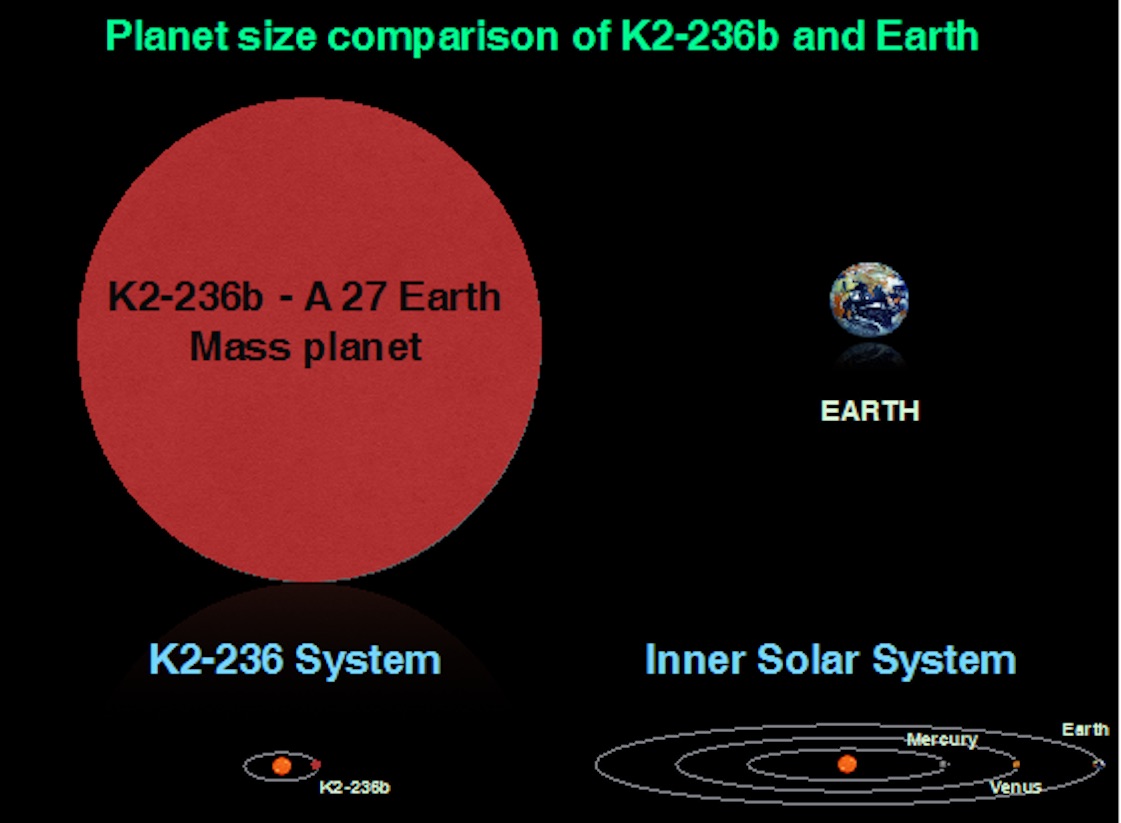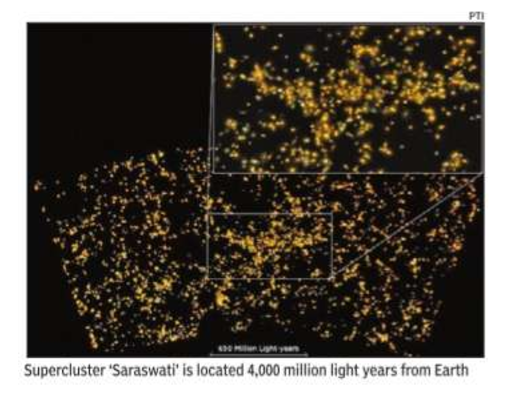Astronomy, Astrophysics: India
This is a collection of articles archived for the excellence of their content. |
Contents |
Saraswati, supercluster of galaxies
2017, the discovery
Ardhra Nair|Desis find giant galaxy cluster|Jul 15 2017 : The Times of India (Delhi)
A team of Indian astrono mers claims to have dis covered an extremely large supercluster of galaxies -with a mass roughly equivalent to that of 20 million billion suns -which they have named `Saraswati'. “This is a very high concentration of galaxies in the universe and it is very rare.Few such structures have been observed till now and this is definitely a first from India,“ said the study's co-author Shishir Sankhyayan of IISER. According to the Pune-based Inter-University Centre for Astronomy and Astrophysics (IUCAA), superclusters are the largest coherent structures in the cosmic web. They are a chain of galaxies and galaxy clusters, bound by gravity, the IUCAA added. Saraswati is one of the largest known structures in the universe, 4,000 million light years from Earth and roughly over 10 billion years old, IUCAA said.
The supercluster was discovered by Sankhyanan; Joydeep Bagchi, a faculty member of IUCCA; Prakash Sarkar of the National Institute of Technology , Jamshedpur; Somak Raychaudhury , director, IUCAA; Joe Jacob of Newman College, Kerala; and Pratik Dabhade, IUCAA research fellow. Their findings were published in the latest issue of `The Astrophysical Journal'.
Sankhyayan said the supercluster extended over 600 million light years and may contain the mass equivalent of over 20 million billion suns.
Planets discovered
2018: EPIC 211945201b/ K2-236b

From: U Tejonmayam, Indian scientists discover planet 600 light years away, June 8, 2018: The Times of India
HIGHLIGHTS
The discovery was made by measuring the mass of the planet using the PARAS spectrograph integrated with 1.2m telescope in Mount Abu.
With this discovery, India has joined a select league of countries which has discovered planets around stars.
A team of scientists from the Physical Research Laboratory (PRL), Ahmedabad, discovered a sub-Saturn or super-Neptune size exoplanet, which is about 27 times the mass of Earth and six times the radius of Earth. The planet revolves around a Sun-like star, some 600 light years away from Earth.
The discovery was made by measuring the mass of the planet using the indigenously designed ‘PRL Advance Radial-velocity Abu-Sky Search’ (PARAS) spectrograph integrated with 1.2m telescope at PRL’s Gurushikar Observatory in Mount Abu. With this discovery, India has joined a select league of countries which has discovered planets around stars.
In a post on the website of the Indian Space Research Organisation, scientists said the name of the host star is EPIC 211945201 or K2-236 and the planet will be known as EPIC 211945201b or K2-236b. The planet was found to go around the star in about 19.5 days.
The surface temperature of the planet was found to be around 600 degrees Celsius, as it is very close to the host star. It is seven times nearer to its star, in comparison with Earth-Sun distance. This might make it uninhabitable The discovery is of importance for understanding the formation mechanism of such super-Neptune or sub-Saturn kind of planets, that are too close to the host star, according to scientists.
Paras spectrograph made an independent measurement of the mass of the planet body, as it was necessary for discovery after data from Nasa’s K2 (Kepler2) photometry could not confirm the planetary nature of the system. Initially, it was Nasa’s K2 (Kepler2) photometry that found that the source was a planetary candidate as it was transiting, where the planet body comes between the star and the observer on Earth.
It goes around the star and therefore blocks a tiny amount of star-light. By measuring the amount of light blocked by the planet body, the diameter or size of the planet can be measured. It was found to be 6 Earth radii. However, that data was not sufficient to confirm the planetary nature of the system.
PRL scientists, who observed the target for about 1.5 years with the spectrograph to probe the nature of the system, made calculations that suggested that the heavy elements like ice, silicates and iron content make 60%-70% of the total mass.
This detection was important as it adds to a sparse catalogue of confirmed exoplanets with masses between 10 and 70 MEarth and radii between 4 and 8 REarth, whose masses and radii are measured to a precision of 50% or better.
Only 23 such systems (including the present) are known to this date with such precise measurement of mass and radii.
